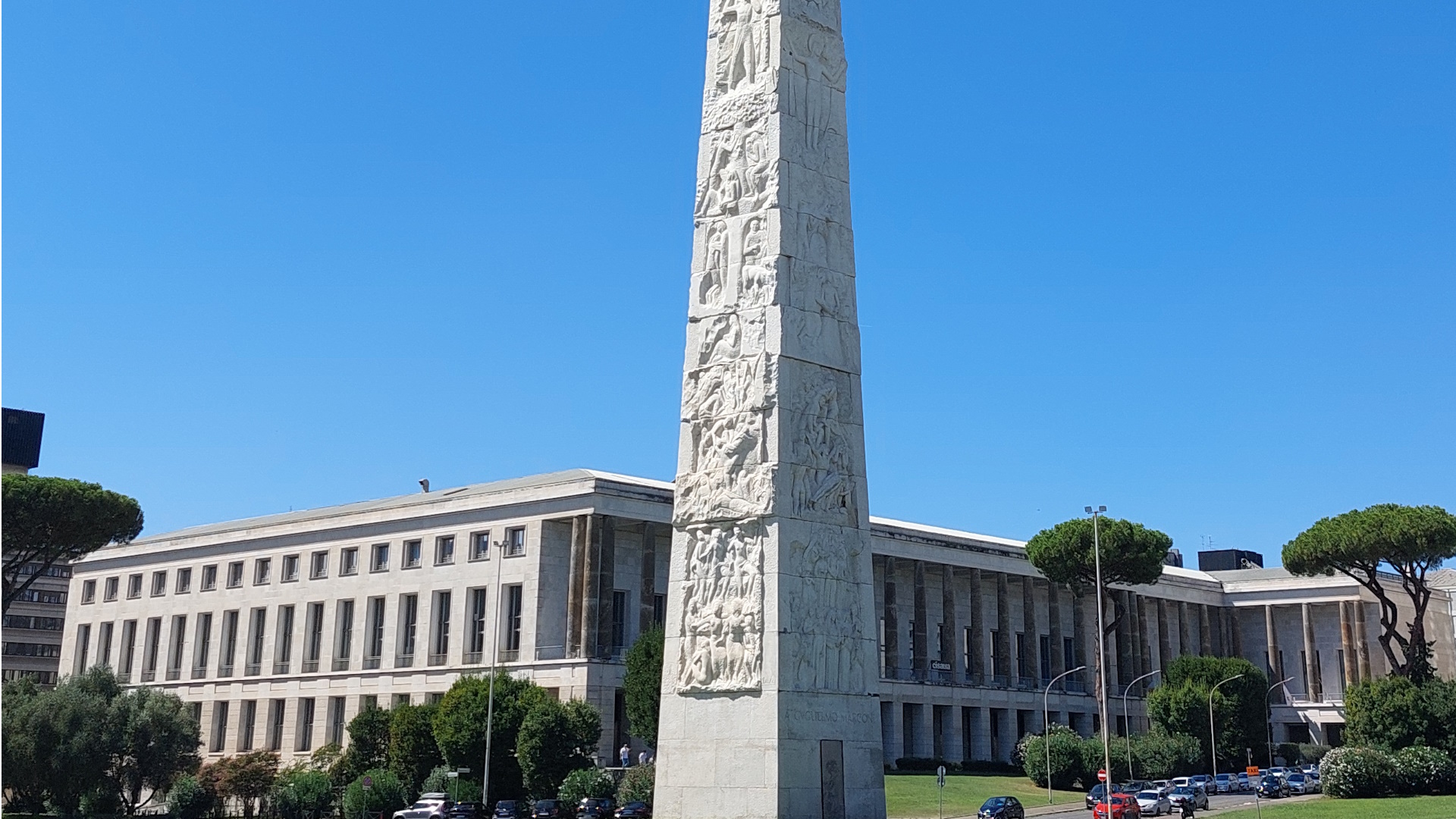
At the centre of Piazza Guglielmo Marconi, previously Piazza Imperiale, stands the obelisk, created by Arturo Dazzi, dedicated to the celebrated Italian physicist. The work, which was commissioned in 1939 by the then Minister for Popular Culture, is a tribute to Marconi's radio-antenna and, at the same time, a prospective focal point for all the roads in the district. When war threatened Rome, the artist had only completed the first two levels of marble bas-relief; when work resumed, in 1951, the Ministry for Public Works actually even proposed to demolish the monument.
In 1953, on the occasion of the Agricultural Exhibition held in EUR, Arturo Dazzi refused to cover the monument's reinforced concrete armature with temporary plaster panels: this lead to the suggestion that the work might finally be completed using new funding. With the approach of the 1960 Rome Olympics, the time was finally right to complete the decorative marble panels: Dazzi resumed the work he had abandoned, and the obelisk was finally inaugurated on 12th December 1959.
The 92 panels that make up the outer coating depict dances, songs, prayers and animals: a kind of thanksgiving by man and nature for Gugliemo Marconi's extraordinary discoveries. Stylistically, there is a clear difference between the two registers prepared in the 1940s and the remaining ones, completed fifteen years later: the initial smoothness and definition of the figures contrasts with the primitive faces, exotic figures and contorted poses that emerge from the raw surface of the marble.
Information
Always visible
 Condividi
Condividi
Location
To find out about all accessibility services, visit the Rome accessible section.











































